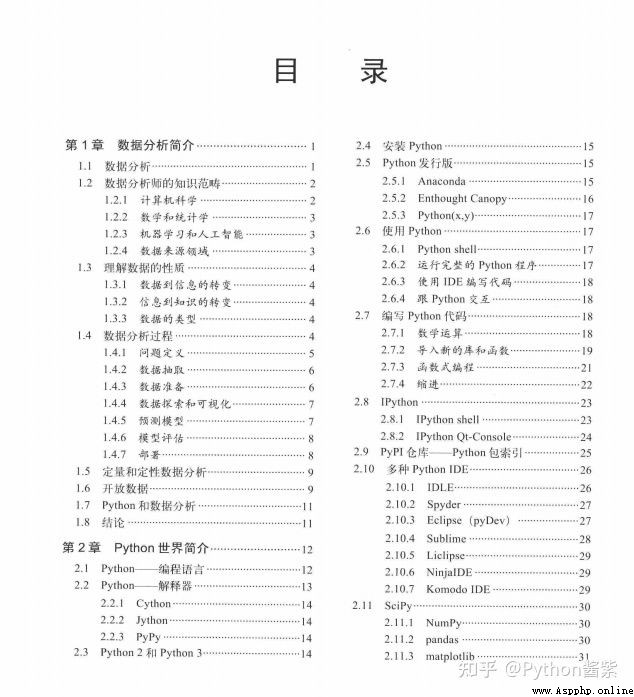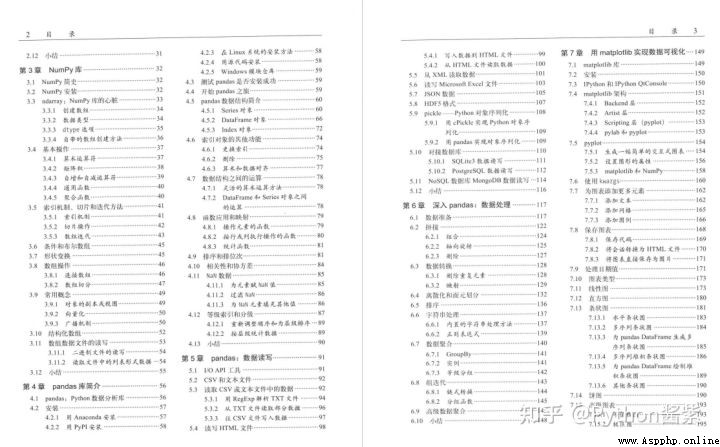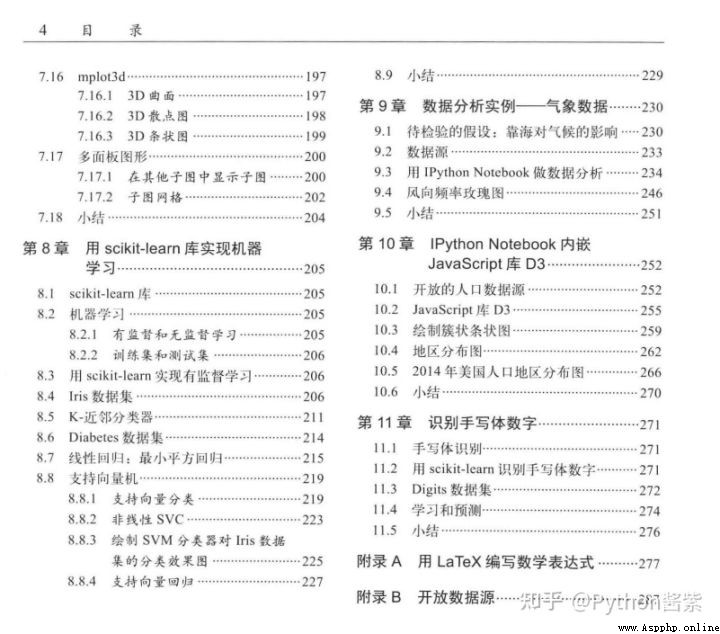Python Is a popular general-purpose programming language , It is widely used in the field of Science . It's easy for you to Python Call the previous C、Fortran perhaps R Code .
Python It's an object-oriented language , Than C and Fortran more Advanced . Use Python Can write legible 、 Clean and least defective code . However ,Python Ben The body does not have a relationship with Matlab Equivalent function block , And that's exactly what it is NumPy Meaning of existence . This article is to introduce NumPy And related Python Scientific Computing Library , Such as SciPy and Matplotib.
NumPy ( Numerical Python Abbreviation ) yes - - Open source Python Scientific Computing Library . Use NumPy, It's natural to use arrays and matrices .NumPy Contains a lot of practical mathematical functions , Covering linear algebra operations 、 Fourier transform and random number generation .
If your system already has LAPACK, NumPy The linear algebra module of will call it , otherwise NumPy We will use our own library functions .LAPACK It is a famous numerical calculation library , It was originally used Fortran written ,Matlab It also needs to be called . In a sense ,NumPy Can replace Matlab and Mathematica Part of the function of , And allow users to conduct rapid interactive prototyping .
The content of this book
The first 1 Chapter —— Guide you to install NumPy, And create a basic NumPy Applications .
The first 2 Chapter —— Introduce NumPy Array objects and a - Some basic knowledge .
The first 3 Chapter —— Teach you how to use NumPy The most commonly used basic mathematical and statistical analysis functions .
The first 4 Chapter —— Tell how to use conveniently NumPy, Including how to select an array - - part ( For example, according to - Set Boolean values to select )、 Polynomial fitting , And manipulate NumPy The form of the object .
The first 5 Chapter —— It covers the contents of matrices and general functions . Matrices are widely used in Mathematics , stay NumPy There are also special objects to represent . The generic function ( ufuncs) yes - Can be used for NumPy Object's scalar function , The input of this function is one - Group scalar , And will generate - - Group scalars as output .
The first 6 Chapter —— Discuss the general function - - Some base This module . General functions can usually be mapped to corresponding mathematical operations , Rujia 、 reduce 、 ride 、 In addition to .
The first 7 Chapter —— Introduce NumPy Medium - Some special functions . As NumPy user , We often find ourselves having - Some special needs . Fortunately, ,NumPy It can meet most of our needs .
The first 8 Chapter —— Introduce how to write NumPy Unit test code for .
The first 9 Chapter —— In depth introduction is very useful Python Drawing library Matplotib. although NumPy Itself cannot be used for drawing , however Matplotib and NumPy The two are perfectly combined - - rise , Its drawing ability can be compared with Matab Comparable .
The first 10 Chapter —— Introduce in more detail SciPy. As mentioned earlier ,SciPy and NumPy It has historical origins ,SiPy yes - Set of high-end Python Scientific computing framework , It can be done with NumPy The common use .
The first 11 Chapter —— It's from this book “ Dessert ”, this - Chapter introduces how to use NumPy and Pygame Write interesting games . meanwhile , We will also learn from it “ Taste ” To AI “ Taste ”.
Catalog
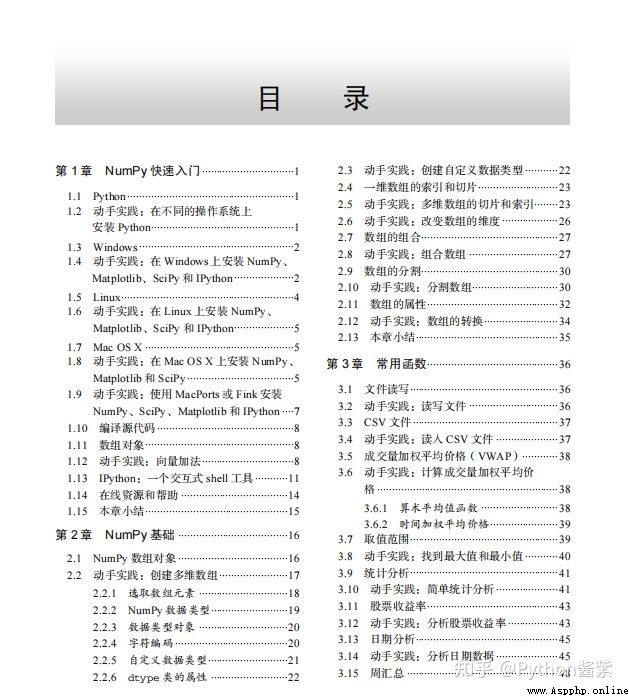
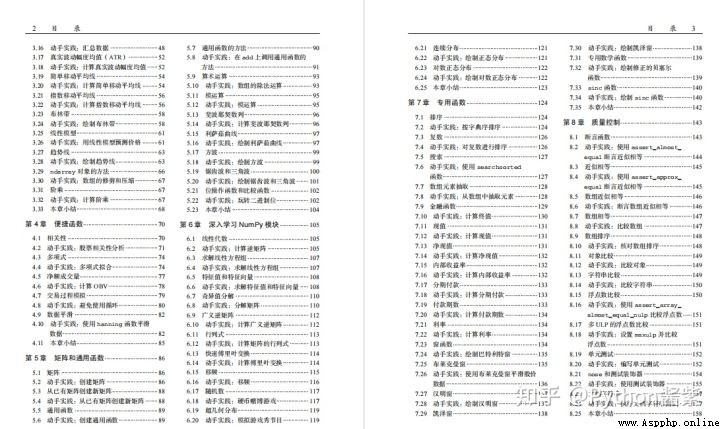
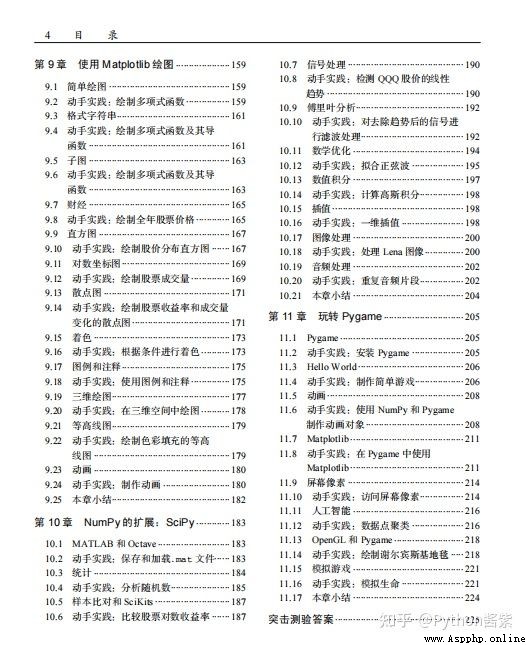
Catalog
The first 1 Chapter data analysis introduction
The first 2 Chapter Python Introduction to the world
The first 3 Chapter NumPy library
The first 4 Chapter pandas Library profile
The first 5 Chapter pandas: Data reading and writing
The first 6 Chapter in depth pandas: Data processing
The first 7 Chapter use matplotlib Data visualization
The first 8 Chapter use scikit-learn Library realizes machine learning
The first 9 Chapter data analysis example 1 meteorological data
The first 10 Chapter lPython Notebook Embedded JavaScript library D3
The first 11 Chapter recognition handwritten digits
